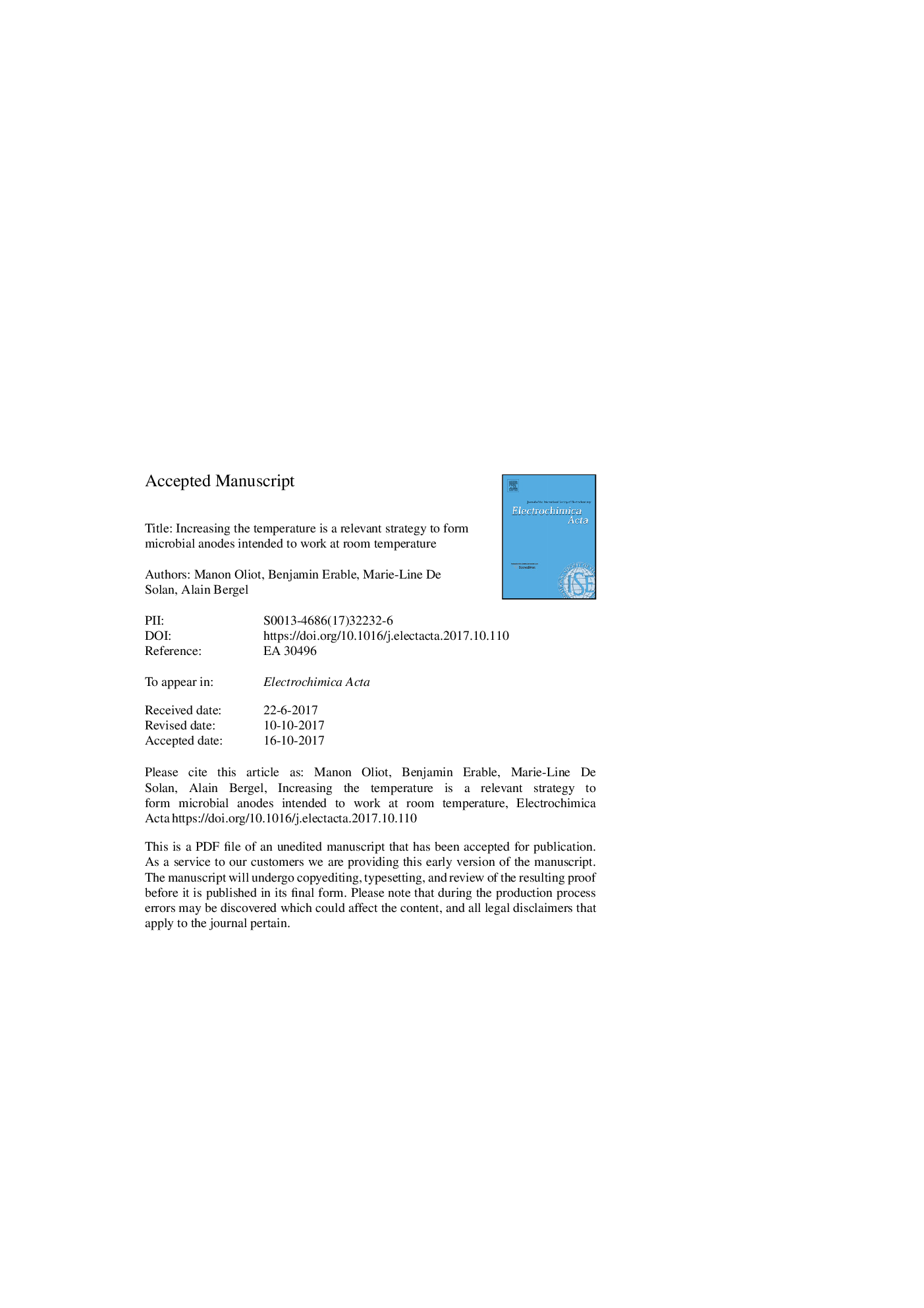| Article ID | Journal | Published Year | Pages | File Type |
|---|---|---|---|---|
| 6605051 | Electrochimica Acta | 2017 | 23 Pages |
Abstract
Reducing the time required for the formation of microbial anodes from environmental inocula is a great challenge. The possibility of reaching this objective by increasing the temperature during the bioanode preparation was investigated here. Microbial anodes were formed at 25 °C and 40 °C under controlled potential with successive acetate additions. At 25 °C, around 40 days were required to perform three acetate batches, which led to current density of 9.4 ± 2 A.mâ2, while at 40 °C, 20 days were sufficient to complete three similar batches, leading to 22.9 ± 4.2 A.mâ2. The bioanodes formed at 40 °C revealed three redox systems and those formed at 25 °C only one. The temperature also impacted the biofilm structure, which was less compact at 40 °C. When the bioanodes formed at 40 °C were switched to 25 °C, they produced current densities similar to those of bioanodes formed at 25 °C; they recovered the single redox system that was developed by the bioanodes formed at 25 °C and the difference in biofilm structures was mitigated. It is consequently fully appropriate to accelerate the formation of microbial anodes by increasing the temperatures to 40 °C even if they are finally intended to operate at room temperature.
Related Topics
Physical Sciences and Engineering
Chemical Engineering
Chemical Engineering (General)
Authors
Manon Oliot, Benjamin Erable, Marie-Line De Solan, Alain Bergel,
